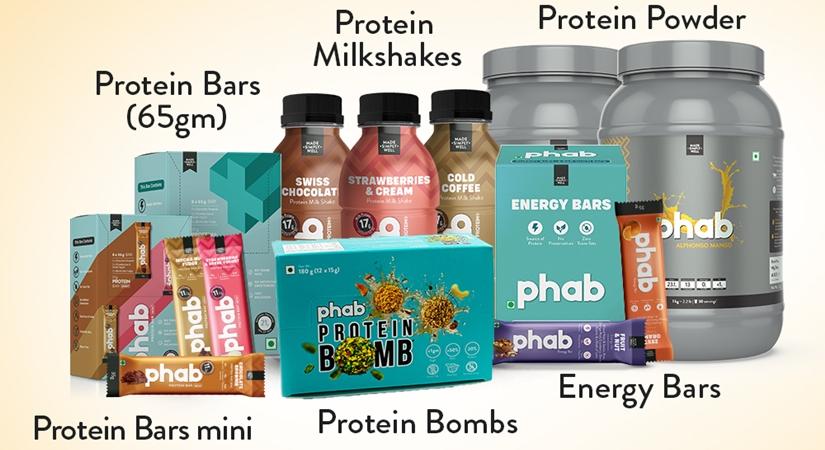Cover Story
New-age brands creating awareness around lifestyle habits

Socially conscious groups are utilising the power of social media to raise awareness in a health community that is already predisposed
ByAnkit Chona
January 9, 2022 (IANSlife) For many working professionals, the lockdown era seemed like a bizarre dream. Work-from-home, which came in as a new beast to most, threw a wrench in the corporate culture.
With the passage of time being so unpredictable and the worst of the pandemic still looming, there was a sense of dread in the air. Anxiety attacks can cause a surge in cortisol and adrenaline in the body, causing people to be at their most gluttonous. Supplement overeating, along with awful sleeping patterns and little or no exercise, resulted in a lifestyle that was exceedingly harmful. A ticking time bomb was on the verge of exploding. To avoid the impending danger to one's health, a realisation was required.
Health consciousness was gradually reawakened. A health renaissance was about to take over from a health hiatus. People are not afraid to experiment with their food, according to a recent study, and they are continually selecting for better food alternatives, with immunity-boosting elements at an all-time high. In the health and wellness industry, several businesses have sprung and thrived. Phab, a trailblazing brand, is attempting to set itself apart with its cleverly created products that cater to specific nutritional needs. This health consciousness, which has progressively become ingrained in many people's daily lives, has gradually awakened. For this transformation, new-age brands deserve a lot of credit.
Here's how to do it:
Communication to the core: Fears of a dangerous atmosphere sparked by consumer lockdown prompted many health and wellness firms to amp up their game with the use of communication tools. The realisation that people require information and awareness about how to become fitter and healthier versions of themselves aided many businesses in developing ads that were perfectly targeted at their target market. Many brands on the market developed healthy snacking options that contained the correct components in the proper ratios. The marketing campaign was forceful in its promotion of how the product will bring about the change that everyone deserves. Social media was also utilised to highlight the importance of having a healthy lifestyle, encouraging consumers to focus on holistic health solutions that included diet, physical, mental, and environmental health.
Impelling the health seekers: No company in the health, lifestyle, and wellness space wanted to pass up the chance to service the legions of individuals who were already oriented to healthy living. Many huge brands aspired to tap into their customers' shifting behaviours, hoping to be the catalyst that helped them reach their objectives. Food and beverage manufacturers from all around the country were offering restyled items with more added benefits. Even commercially cosmetic grooming products have begun to incorporate ayurvedic components to appeal to end-users who prefer organic products.
Holistic health appeal and development: People in cities are now looking at the complete picture, not just the subspace between the narrow line that connects health, wellbeing, and universal living. This comprehensive approach is not limited to cities; even village dwellers are looking for sustainable choices that not only improve their personal lifestyle but also improve the environment. According to a recent poll, 68 percent of rural residents desire to make a good impact on the environment through their daily activities. Up to 40% of respondents said they want to spend more on education, new technology, health, and wellbeing in the future. Many firms are emphasising sustainable living as a marketing point, as it promotes the holistic growth of consumers' and the planet's well-being. For example, there are labels that promote notebooks made from recycled paper or nutrition-enriched products derived from plant-based substances, such as protein bars.
Shock Therapy: Shock therapy is a vigorous persuading strategy that embeds particular thoughts in end-users' heads. Certain concepts become so common that most people feel forced to pay attention to them. The popularity of copper bottles or protein-infused snacks and powders are examples of this. Copper has been advocated for its health benefits. Protein and a healthy body are linked, according to brands such as 'MuscleBlaze' and 'My Protein.' Advertisements that are repeated and word of mouth can make a big difference. In most of their meals, more than half of all Indian consumers (52%) included all needed nutrients. They also changed their eating habits to include more nutritious foods and beverages.
Being health-conscious and in shape is not difficult, but it does necessitate consistent effort. When the concept of wellness and a healthy mind and body is monetized, it strives to put end-users and their well-being first and foremost. The fitness cult has grown into a sizable group, with 48 percent of Indian customers being classified as "inspired health consumers."
Socially conscious groups are utilising the power of social media to raise awareness in a health community that is already predisposed.
Ankit Chona, Co-founder & MD of Phab
(This article is website exclusive and cannot be reproduced without the permission of IANSlife)
IANSlife can be contacted at ianslife@ians.in


